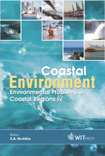Coastal Erosion Problems In Northern Aegean Coastline, Greece. The Case Of The Rhodope Prefecture Coasts.
Price
Free (open access)
Transaction
Volume
58
Pages
Published
2002
Size
665 kb
Paper DOI
10.2495/CENV020141
Copyright
WIT Press
Author(s)
G S Xeidakis & P Delimani
Abstract
Coastal erosion problems in Northern Aegean coastline, Greece. The case of the Rhodope Prefecture coasts G. S. Xeidakis and P. Delimani Department of Civil Engineering, Democritus University of Thrace, Xanthi, Greece. Abstract Approximately half of the world’s population are living or working in a narrow zone of a 100 km from the world coastlines. In this paper the erosion problems appearing in the central part of the Greek Thrace coastline (Rhodope Prefecture), are examined. The coastline studied is more than 100 km long and belongs to Xanthi-Komotini tectonic basin and is not well developed economically yet. From geomorphologic point of view the aforementioned coastal zone is principally a hilly area, consisting of Miocene, loose to semi-consolidated deposits (gravels, sands, silty-clays and conglomerates). This material is impregnated with CaC03 and/or SiO2. in various degrees, forming a caliche (calcrete) deposit at the lower part of the column. The impregnation material is increasing with depth forming nodules of CaC03 in the upper layers and turning to hard marl limestone or calcareous sandstone at greater depth. Small torrent deltas are built at the exits of valleys to the sea. The serious problems of the coastal erosion are concentrated principally to the upper, loose or semi consolidated part of the sedimentary column. The height of the coastal cliffs (bluffs) varies from one to 30 m and the rate of their retreat fluctuates from a few centimeters to 3 m/year. The causes of the coastal erosion is attributed to: (a) natural factors like sea waves and alongshore currents, subsidence of the broader area, increase of the sea water level, consistency of the material, etc. and (b) to human-induced changes e.g. regulation of water courses and construction of dams on the streams inland, which results in the depletion of sediments of the rivers’ waters; construction of inlets, jetties, breakwaters and seawalls at the coastline; human induced subsidence due to groundwater over pumping, etc.
Keywords





